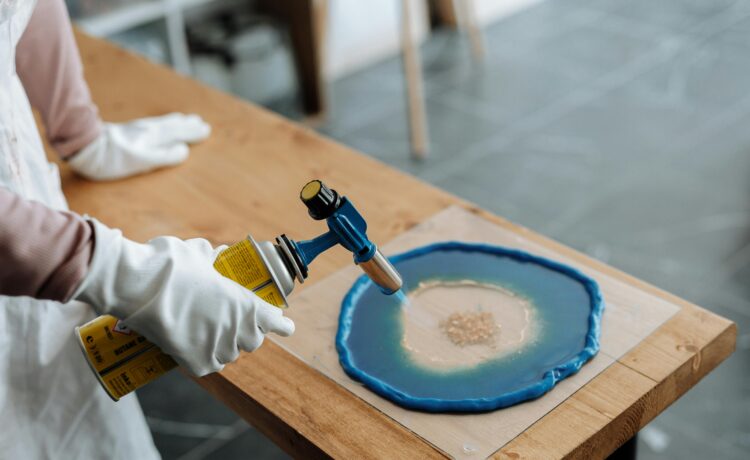Casting resin is a captivating craft that allows you to transform your creative visions into reality. Whether you’re an experienced artist or just starting out, the allure of working with this versatile material is hard to resist. From stunning jewelry pieces to intricate home decor items, casting resin opens up a world of possibilities.
But let’s face it—achieving flawless results can sometimes feel like navigating through a maze. You may find yourself faced with bubbles, uneven surfaces, and other surprises along the way. Fear not! With the right tips and techniques in your toolkit, you’ll be well on your way to mastering the art of casting resin.
Join us as we explore everything from different types of casting resin to advanced methods for unique projects. Get ready to unleash your creativity and elevate your crafting game!
Types of casting resin
When diving into the world of casting resin, it’s essential to know the different types available. Each type has unique properties and uses that can significantly impact your projects.
Epoxy resin is one of the most popular choices. It’s known for its clarity and durability, making it perfect for creating stunning jewelry or high-gloss finishes on art pieces.
Polyurethane resin is another option, offering flexibility once cured. This makes it ideal for molds or items that require some bend without breaking.
For those interested in a faster cure time, polyester resin might be your go-to. However, keep in mind it’s less forgiving than epoxy and requires proper ventilation due to its strong fumes.
There’s UV resin, which cures quickly when exposed to sunlight or UV light. It’s great for quick fixes but may not provide the same depth as other resins. Choose wisely based on your project’s needs!
Preparing your workspace and materials
Creating the perfect workspace is essential for successful casting resin projects. Start by choosing a clean, flat surface free from clutter. This will help you focus and minimize distractions.
Next, gather all your materials before you begin. You’ll need mixing cups, stir sticks, gloves, and safety goggles to protect yourself during the process. Having everything at hand reduces chaos.
Ensure proper ventilation in your area. Casting resin can produce fumes that might be harmful if inhaled over time. Open windows or use a fan to keep air circulating.
Consider laying down a protective covering on your work surface. Plastic sheeting or newspaper can catch drips and spills, making cleanup easier later on.
Double-check that you’ve selected high-quality resin suitable for your project type. Using the right products sets the stage for achieving beautiful results without setbacks.
Step-by-step guide for casting resin
Start by gathering all necessary tools and materials. You’ll need your casting resin, hardener, mixing cups, stir sticks, and gloves.
Prepare your mold carefully. Clean it to ensure a smooth finish. Apply a release agent if needed to avoid sticking.
Measure the resin and hardener according to the manufacturer’s instructions. Precision is key here for optimal curing.
Mix them thoroughly in a cup. Stir slowly to minimize bubbles but ensure complete integration of the two components.
Pour the mixture into your mold gradually. Start at one corner and let it flow gently across the surface for an even distribution.
If you’re adding pigments or inclusions, do so now—gently swirl them in for artistic effects without creating too many air pockets.
Allow sufficient time for curing as recommended on the product label before demolding or working further with your piece.
Tips for achieving flawless results
To achieve flawless results in casting resin, start with high-quality materials. Invest in a reputable brand of casting resin and hardener to ensure optimal mixing and curing.
Temperature plays a crucial role. Aim for a consistent environment around 70°F (21°C) to 75°F (24°C). This helps the resin cure evenly without bubbles or imperfections.
Mix thoroughly but gently. Stirring too aggressively can introduce air bubbles, so use slow, deliberate motions when combining the resin and hardener.
Consider using a vacuum chamber or pressure pot if you want to eliminate trapped air completely. These tools will help you achieve an ultra-smooth finish without any surface blemishes.
Patience is key. Allow your project enough time to cure fully before demolding or applying additional layers. Rushing this step often leads to disappointing outcomes.
Common mistakes to avoid
When working with casting resin, avoiding common pitfalls can save you time and frustration. One frequent mistake is not measuring the components accurately. Even a slight imbalance can lead to issues like improper curing or cloudy finishes.
Another error is neglecting to mix thoroughly. Insufficient mixing may leave pockets of uncured resin that compromise your project’s integrity. Take the time to stir well—patience pays off here.
Many beginners rush into pouring without preparing their molds properly. Skipping mold release agents can result in tough-to-remove pieces that ruin your hard work.
Temperature plays a crucial role too. Pouring at inappropriate temperatures can affect curing times and clarity. Always check your workspace environment before starting.
Don’t underestimate the importance of ventilation when working with resin materials. Proper airflow will keep harmful fumes at bay while ensuring a safe crafting experience for you.
Advanced techniques for unique projects
For those looking to elevate their casting resin projects, exploring advanced techniques can open up a world of creativity. One popular method is incorporating color pigments or dyes into your resin. This allows for stunning effects and unique finishes that can transform ordinary pieces into extraordinary works of art. Experimenting with transparent and opaque colors together creates depth and complexity in your designs.
Layering is another technique worth mastering. By pouring multiple layers at different times, you can achieve intricate designs that capture attention. Begin with a base layer, let it cure partially, then add additional layers for dimension.
If you’re feeling adventurous, consider embedding objects within the resin. Flowers, seashells, or even small trinkets can create beautiful focal points in your work. Ensure these items are clean and dry before encasing them in the resin for the best results.
Another advanced method involves using silicone molds to achieve specific shapes or textures in your project. Silicone molds allow for detailed designs while being easy to release once cured.
Don’t shy away from experimenting with various additives like glitter or metallic powders to give your project an eye-catching finish. These elements enhance visual appeal and allow you to express personal style in every piece you create.
Embrace these advanced techniques as tools at your disposal; they encourage experimentation and help develop new skills along the way!





